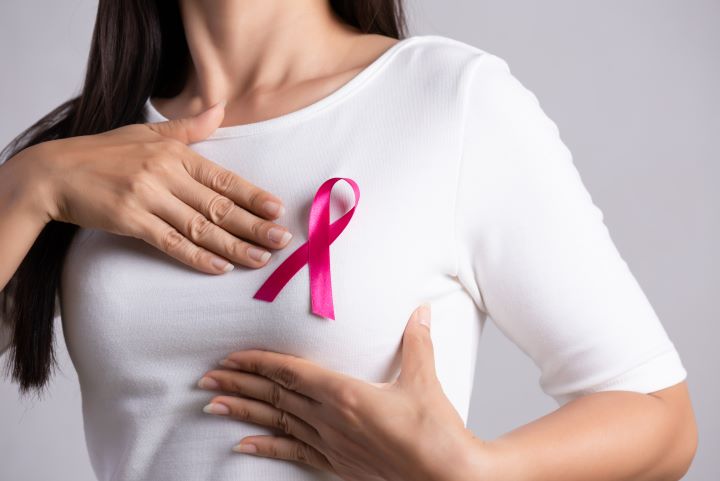Causes, Symptoms, Stages, and Management of Triple-negative Breast Cancer
Statistical data suggests that every year, nearly 264,000 and 2,400 breast cancer cases are detected nationwide among women and men, respectively. The condition requires early diagnosis and timely treatment for survival and recovery. With rapid advancements in healthcare, oncologists have developed useful treatments for breast cancer. Triple-negative breast cancer is a type of breast cancer affecting 10 to 15% of patients with the condition. Read on to learn about its causes, stages, signs, and treatments.

Statistical data suggests that every year, nearly 264,000 and 2,400 breast cancer cases are detected nationwide among women and men, respectively. The condition requires early diagnosis and timely treatment for survival and recovery. With rapid advancements in healthcare, oncologists have developed useful treatments for breast cancer. Triple-negative breast cancer is a type of breast cancer affecting 10 to 15% of patients with the condition. Read on to learn about its causes, stages, signs, and treatments.
Understanding Triple-Negative Breast Cancer: Causes, Symptoms, Stages, and Management
The realm of oncology has seen significant advancements over the years, and yet, the complexities surrounding different types of cancers continue to baffle medical professionals. Among these, breast cancer proves to be a formidable opponent, with various subtypes that each require a unique approach to treatment. Triple-negative breast cancer is one such subtype. In this article, we delve into what constitutes triple-negative breast cancer, its causes, symptoms, and stages, and how it is managed in the medical field.
What is Triple-Negative Breast Cancer?
Breast cancer is categorized based on the presence or absence of three receptors known to fuel most breast cancers, namely, estrogen receptors, progesterone receptors, and HER2 protein. Triple-negative breast cancer is characterized by the absence of all three receptors, hence the name. This type of breast cancer is significantly more challenging to treat than other types due to the lack of targeted therapies.
Causes of Triple-Negative Breast Cancer
While the exact cause behind the occurrence of triple-negative breast cancer remains unknown, certain factors have been associated with a higher risk. These include being of African-American or Hispanic descent, being younger (below the age of 50), having a BRCA1 mutation, and having a higher body mass index (BMI). Additionally, women who have not given birth or who conceived for the first time after the age of 30 might have an increased risk of developing triple-negative breast cancer.
Symptoms of Triple-Negative Breast Cancer
The symptoms of triple-negative breast cancer are similar to those of other breast cancers and may include a lump or mass in the breast, changes in the texture of the skin on or around the breast, a change in the size or shape of the breast, or nipple discharge. It is crucial to seek medical attention if any of these signs are noticed, as early detection significantly improves the chances of successful treatment.
Stages of Triple-Negative Breast Cancer
The stages of this type of cancer range from stage 0 (non-invasive) to stage IV (metastatic). The stage is determined by the size of the tumor, whether or not the cancer has spread to the lymph nodes, and if it has metastasized to other parts of the body. The stage of the cancer at diagnosis influences the treatment plan and the prognosis.
Management of Triple-Negative Breast Cancer
Despite the challenges associated with treating triple-negative breast cancer, there are viable management options. Broad-spectrum treatments such as surgery, chemotherapy, and radiation therapy are commonly used. Recent advancements in the field have led to the development of immunotherapy, which uses the body’s immune system to fight cancer cells, offering a new ray of hope.
In the United States, the fight against breast cancer is a priority, with research and development efforts continually being made to improve treatments and outcomes. These efforts have led to a steady increase in survival rates over the past decades.
Breast Cancer Treatment in the United States
In the U.S., there are several reputable institutions known for their pioneering work in breast cancer research and treatment. These include the Memorial Sloan Kettering Cancer Center in New York, the Johns Hopkins Hospital in Baltimore, and the MD Anderson Cancer Center in Houston. These institutions offer comprehensive cancer care, state-of-the-art facilities, and multidisciplinary teams of specialists. However, the cost of treatment can be high, and it is essential for patients to research and consult with healthcare providers to understand the financial implications fully.
In conclusion, triple-negative breast cancer, while more challenging to manage than other subtypes, is not unbeatable. Through continued research and advancements in treatment options, there is hope for improved outcomes for those diagnosed with this type of cancer. Knowledge is power in the fight against cancer, and understanding the causes, symptoms, and stages of triple-negative breast cancer is a crucial step in that direction.




